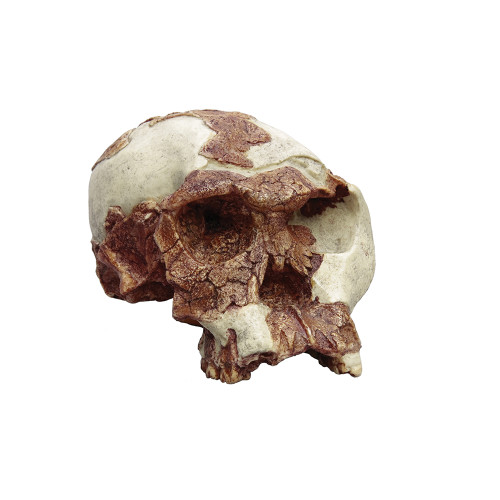Homo habilis skull OH 24 (1.8 million years).
The Homo habilis Skull OH 24 (KNM) was discovered by P. Nzube in 1968 and first described by M. Leakey, Clark, & L. Leakey in Nature in 1971.
This nearly complete but very badly crushed specimen constituted the oldest hominid found in Olduvai Gorge, Tanzania, and supported the designation of the then controversial species of Homo habilis.
Originally, some scientists had resisted classification of Homo habilis as a new species, preferring instead to separate specimens into either A. africanus or H. erectus.
Although OH 24 shows characteristics of both species, there are marked differences.
Its estimated cranial capacity of 600cm3 is the minimum for classification as Homo, but the difficulties of reconstruction may have contributed to the smallish estimation.
The species possessed a larger brain than A. africanus or A. boisei, though smaller than Homo erectus from Java and China.
The cranial bones are thinner than typical for australopithecines, and the braincase is wider and shorter.
The width of the face approaches A. boisei in breadth, but is not similarly flat.
The facial profile of H. habilis slopes forward but projects less than in A. africanus.
Some scientists believe that the range of variation of specimens once attributed to Homo habilis is too great to represent a single species; consequently, more than one species of early Homo may have lived at the same time in East Africa.
Notes:
- A stand is available by enquiry, sold separately







